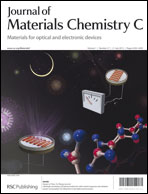In this study we describe a low-cost cadmium sulfide (CdS) photoconductor that behaves as a highly sensitive and rapidly responding detector toward low-intensity light. Through the observation of TEM images and analysis of micro-Raman spectra, the degree of crystallization of CdS films increased and their dislocation defects were removed effectively after treatment with several shots from a KrF excimer laser. Such laser treatment of CdS photoconductors could be conducted in air and completed within a few seconds. At a very low bias voltage of 1 mV, the laser-treated CdS device provided a record high responsivity of 7200 A W−1 and a detectivity of 1015 Jones. In addition, at a normal bias voltage of 1 V, it displayed an extremely high responsivity of 7 × 106 A W−1 and a detectivity of 6 × 1016 Jones. The measured response time of the laser-annealed CdS device from the dark to illumination at 10−2 fW μm−2 was only 40 ms—much faster than the shutter speed or exposure time required for a professional digital camera for such low-light image detection. Accordingly, KrF laser annealing is a simple and rapid process that can significantly enhance the low-light detection properties of CdS, a commercial photoconductor. Our strategy proposed herein appears to hold great potential for ultralow-light image detection with ultralow power consumption.

You have access to this article
 Please wait while we load your content...
Something went wrong. Try again?
Please wait while we load your content...
Something went wrong. Try again?


 Please wait while we load your content...
Please wait while we load your content...